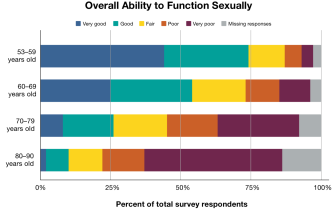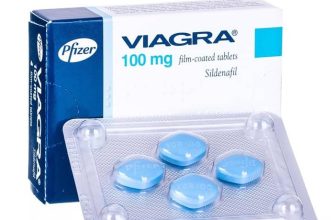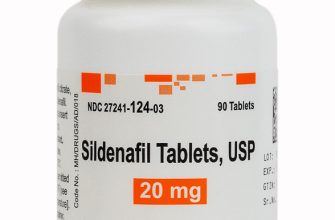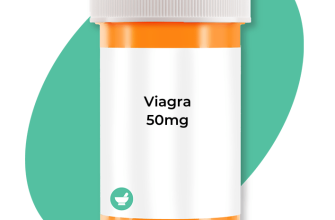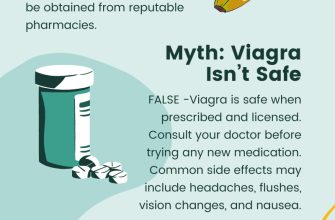Facing erectile dysfunction? Consider exploring the history of treatment options. Before the arrival of Viagra in 1998, men relied on a range of approaches, some surprisingly effective, others less so.
Penile injections, using medications like papaverine, were a common method. These directly increased blood flow, producing an erection, though they came with potential side effects like pain or prolonged erections. Another established option was vacuum erection devices, external pumps creating a vacuum to draw blood into the penis. While effective for some, these methods weren’t without limitations, often causing discomfort or bruising.
Surgical implants, offering a more permanent solution, involved inserting rods into the penis. This provided a consistently rigid erection, but with the trade-off of reduced spontaneity and potential complications. Hormone replacement therapy, primarily for men with low testosterone, was also used, although its impact on erectile dysfunction varied greatly depending on the underlying cause. Lifestyle changes, including dietary adjustments and increased exercise, were also often recommended.
Understanding these earlier treatments provides context for the revolutionary impact of Viagra. It’s important to remember that the options available before Viagra had varying degrees of success and potential drawbacks. This historical perspective can help appreciate the advancements in treating erectile dysfunction.
- Before Viagra: A Look at Erectile Dysfunction Treatments Past
- Early Medical Approaches to Erectile Dysfunction
- Psychological Therapies and Lifestyle Changes for ED
- Addressing Underlying Psychological Issues
- Lifestyle Modifications for Improved Sexual Health
- Medical Consultation
- The Rise of Injectable Medications and Vacuum Erection Devices
- Injectable Medication Details
- Vacuum Erection Devices (VEDs)
- Comparison Table
- Penile Implants: A Permanent Solution for Erectile Dysfunction
- The Impact of Limited Treatment Options on Men’s Lives
Before Viagra: A Look at Erectile Dysfunction Treatments Past
Before the arrival of Viagra, men relied on a range of treatments, many less effective and with more significant side effects. Let’s explore some:
- Intracavernosal injections: This involved injecting medications directly into the penis to stimulate an erection. Papaverine was a common choice, though it sometimes caused prolonged erections (priapism).
- Penile implants: These surgically implanted devices offered a permanent solution, providing rigidity for sexual intercourse. However, surgery and potential complications were major drawbacks.
- Vacuum erection devices (VEDs): These devices create a vacuum around the penis, drawing blood in and causing an erection. While relatively simple to use, they could be uncomfortable and sometimes damage penile tissue.
- Hormone replacement therapy: In cases of erectile dysfunction caused by low testosterone, hormone replacement therapy was and is an option. However, it doesn’t work for all men.
Beyond these established methods, various herbal remedies and alternative treatments were also commonly sought. Their efficacy varied widely and lacked rigorous scientific backing.
- Yohimbine: Derived from the bark of the yohimbe tree, it showed some promise but presented significant side effects.
- Ginseng: Another popular herbal remedy, ginseng’s effectiveness for erectile dysfunction remains questionable.
It’s important to note that many men chose not to seek treatment at all, dealing with erectile dysfunction in silence. This lack of effective, readily available, and safe options dramatically impacted quality of life for many. Viagra’s arrival represented a substantial shift in the treatment landscape.
Early Medical Approaches to Erectile Dysfunction
Doctors historically prescribed a range of treatments, often reflecting the prevailing medical understanding of the time. Hormone replacement therapy, particularly testosterone, featured prominently. This aimed to boost libido and improve erectile function by addressing potential hormonal deficiencies.
Surgical interventions also existed. Penile implants, though rudimentary compared to modern versions, offered a solution for some men. These procedures aimed to mechanically restore rigidity. Risks were significant, however, necessitating careful patient selection.
Vascular surgery occasionally addressed issues with blood flow to the penis. Procedures attempted to improve circulation, though success rates varied considerably depending on the underlying cause of erectile dysfunction.
Psychological counseling played a role, recognizing the strong link between mental health and sexual function. Therapists helped patients address anxiety, depression, and relationship issues impacting sexual performance. This approach aimed to improve overall well-being, potentially easing erectile difficulties.
Herbal remedies and folk treatments held a significant place. Many cultures employed various plants and extracts believed to enhance sexual prowess. Scientific evidence supporting their efficacy was generally lacking, however their widespread use reflected the limited availability of other options.
Vacuum erection devices provided a non-invasive approach. These devices created a vacuum around the penis, drawing blood into it and causing an erection. They offered a relatively safe alternative to surgery or medication, but were not always reliable.
Intracavernosal injections, involving injecting medication directly into the penis, also emerged. These injections stimulated blood flow, producing an erection. Though effective for some, they carried side effects such as pain and bruising, requiring careful monitoring.
Psychological Therapies and Lifestyle Changes for ED
Consider cognitive behavioral therapy (CBT). CBT helps identify and change negative thought patterns contributing to performance anxiety around sex. Regular sessions can significantly improve confidence and reduce anxiety surrounding intimacy.
Addressing Underlying Psychological Issues
- Relationship counseling: If relationship problems contribute to ED, couples therapy can help improve communication and address intimacy issues. A therapist guides discussions, facilitating resolution of underlying conflicts.
- Stress management techniques: Chronic stress frequently worsens ED. Techniques like mindfulness meditation, yoga, or deep breathing exercises can help manage stress levels and improve overall well-being, positively impacting sexual function.
Lifestyle adjustments are equally crucial. Regular exercise improves blood flow throughout the body, including the penis. Aim for at least 30 minutes of moderate-intensity exercise most days of the week.
Lifestyle Modifications for Improved Sexual Health
- Dietary changes: A balanced diet rich in fruits, vegetables, and lean protein supports overall health, influencing sexual function. Reduce consumption of processed foods, saturated fats, and excessive sugar.
- Weight management: Obesity is a risk factor for ED. Losing even a small amount of weight can often improve sexual health. Work with a doctor or nutritionist to create a safe and effective weight loss plan.
- Quit smoking: Smoking damages blood vessels, impacting blood flow crucial for erections. Quitting smoking is beneficial for overall health and can improve erectile function.
- Limit alcohol consumption: Excessive alcohol consumption can negatively affect sexual function. Moderate your alcohol intake or abstain entirely.
- Address sleep disorders: Sufficient sleep is essential for good health and proper hormonal balance. Treating sleep apnea or other sleep disorders can significantly improve sexual health.
Medical Consultation
Remember to discuss these strategies with your doctor. They can help determine the underlying cause of your ED and recommend the most suitable approach.
The Rise of Injectable Medications and Vacuum Erection Devices
Before Viagra, men seeking erectile dysfunction treatment relied heavily on two primary methods: injectable medications and vacuum erection devices (VEDs). Injectable medications, primarily papaverine, phentolamine, and prostaglandin E1, offered a direct approach. A physician would inject one of these drugs directly into the penis, causing vasodilation and facilitating an erection. Success rates varied, depending on the medication and individual response. Side effects, including pain at the injection site, prolonged erections (priapism), and bruising, were common considerations.
Injectable Medication Details
Different combinations of these medications were explored to optimize efficacy and minimize side effects. Precise dosage adjustments were critical for safe and successful treatment. The availability of these injections varied significantly across geographical regions and healthcare systems. Many men found the self-administration challenging, requiring ongoing medical supervision.
Vacuum Erection Devices (VEDs)
VEDs presented a non-invasive alternative. These devices consist of a plastic cylinder placed over the penis and a pump to create a vacuum, drawing blood into the penis and causing an erection. A constriction ring is then placed at the base of the penis to maintain the erection. While generally well-tolerated, VEDs could cause bruising, discomfort, and in rare cases, injury. Some men found the devices cumbersome and inconvenient for everyday use. The effectiveness was also dependent on the severity of the erectile dysfunction.
Comparison Table
| Method | Mechanism | Advantages | Disadvantages |
|---|---|---|---|
| Injectable Medications | Direct vasodilation | Relatively quick onset | Pain, priapism risk, bruising |
| Vacuum Erection Devices | Mechanical vacuum | Non-invasive | Bruising, discomfort, potential injury |
Both injectable medications and VEDs offered viable options for managing erectile dysfunction before the advent of oral medications like Viagra. Understanding the limitations and potential side effects of each is crucial for a complete historical perspective.
Penile Implants: A Permanent Solution for Erectile Dysfunction
Consider penile implants if other treatments haven’t worked. They offer a lasting solution for erectile dysfunction.
Two main types exist: malleable and inflatable. Malleable implants provide a consistently firm penis, suitable for those prioritizing simplicity. Inflatable implants offer more natural-feeling erections, achieved through a pump mechanism implanted in the scrotum.
Surgery is typically outpatient, taking about 1-2 hours. Expect some discomfort and swelling immediately afterward, managed with pain medication. Full recovery usually takes several weeks, with sexual activity recommended after a few months.
Potential complications include infection, mechanical failure, and changes in sensation. Discuss these risks thoroughly with your doctor. Your doctor will guide you through the appropriate pre-operative and post-operative care.
Prior to surgery, complete a full medical history review with your surgeon. Openly discuss all medications, allergies, and previous surgeries. Realistic expectations about implant function and limitations are crucial for patient satisfaction.
Post-operative follow-up appointments are vital to monitor healing and address any concerns. Regular check-ups will allow for the early detection and management of potential complications.
Long-term satisfaction rates are high for men who choose this path. Many men report improved self-esteem and intimacy after implantation. The choice, however, requires careful consideration and a frank discussion with your urologist.
The Impact of Limited Treatment Options on Men’s Lives
Before Viagra, men facing erectile dysfunction (ED) experienced significant challenges. Many suffered from diminished self-esteem and confidence, impacting their relationships and overall quality of life. Studies show a strong correlation between ED and depression, with untreated ED leading to increased rates of anxiety and relationship difficulties.
Limited treatment options, primarily involving injections or penile implants, often proved impractical or undesirable for many men. These procedures carried risks and were not always successful, creating further emotional distress. The lack of effective oral medication meant that many men simply accepted their condition, enduring the negative consequences without hope of improvement.
The social stigma surrounding ED further complicated the situation. Open conversations about sexual health were rare, leaving many men feeling isolated and ashamed. This silence often prevented them from seeking help, exacerbating their distress. The impact extended beyond the individual, affecting partners and impacting intimacy within relationships.
Consequently, the absence of widely available and effective treatments for ED had a profound and often devastating impact on men’s emotional well-being, relationships, and overall sense of self-worth. The introduction of Viagra significantly altered this landscape.


